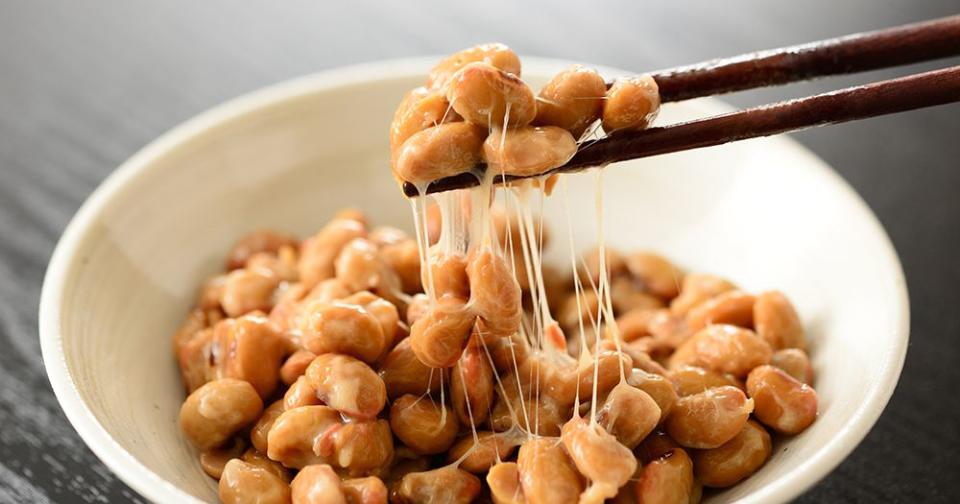WTF Is Natto — and Should You Try It?
Here's everything you need to know about the superfood made from fermented soybeans.

If someone put a big bowl of gooey natto in front of you and you'd never heard of the dish, your first thought might be that it doesn't look or smell particularly appetizing. But if you can get past the aroma and texture of this fermented soybean, you'll likely be pleased with the savory umami flavor and the wide array of health benefits provided by this Japanese delicacy.
:These Edamame Benefits Will Make It Your New Favorite Plant Protein
If you're still stuck in the "I'm not eating anything slimy" state of mind, maybe learning more about natto will convince you otherwise.
What Is Natto?
Natto is simply fermented soybeans, and the ingredient is commonly eaten for breakfast in Japan. To make natto, soybeans are first cooked, then they're combined with beneficial bacteria (specifically, types of bacillus) and left to ferment for an extended period (in this case, two to three days). Fun fact: This is how other fermented foods with healthy bacteria — kombucha, sauerkraut, tempeh, and kimchi, for example — are created.
:These Soy Milk Nutrition Facts Will Have You Ditching Dairy In No Time
Is Natto Good for You?
"Because natto is a fermented food, it contains bacillus subtilis, a microorganism that may boost good bacteria in your gut," explains Christy Brissette, M.S., R.D., president of 80 Twenty Nutrition. This fermentation process not only preserves the soybean but also creates a sticky, somewhat slimy, earthy-flavored food. Each batch of natto can taste slightly different due to the slight differences in the fermentation process, but the overarching flavor is similar to cottage cheese, foie gras, or liver.
Other than the boost of bacteria for your gut, the fermented soybeans are also packed with a slew of macro- and micronutrients. Per 1/2 cup of natto, you'll get about 17 grams of protein, plenty of fiber, and a high content of bone-building vitamin K2, adds Brissette. "Lastly, natto also has the potential to prevent blood clots that can cause heart attacks and strokes," she says.
:These Benefits of Fiber Make It One of the Most Important Nutrients In Your Diet
How to Eat Natto
So, now that you're (hopefully) intrigued, how are you supposed to buy and eat natto? First, head to your local Asian specialty store to pick up this treat. Traditionally, it's enjoyed with steamed rice or spicy Japanese mustard, but if you're thrown off by eating it essentially alone, it can easily be mixed into other foods so you can't detect the slickness, says Brissette.
It's fantastic in miso soup, and it can be used in pasta dishes and sushi as a tasty condiment, suggests Brissette. Since it has the same umami flavor as soy sauce or tempeh, it can also be used in dishes where you would find those ingredients.
:The Misappropriation of Asian Culture In Wellness and Food Is Doing More Harm Than You May Realize

